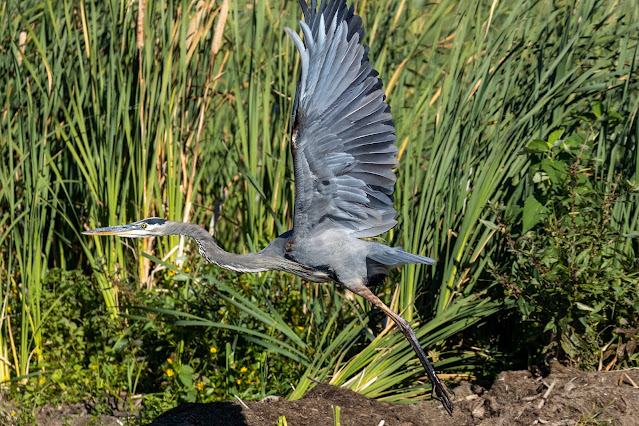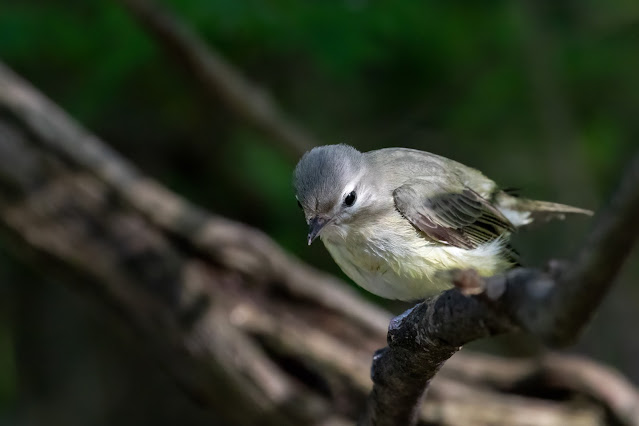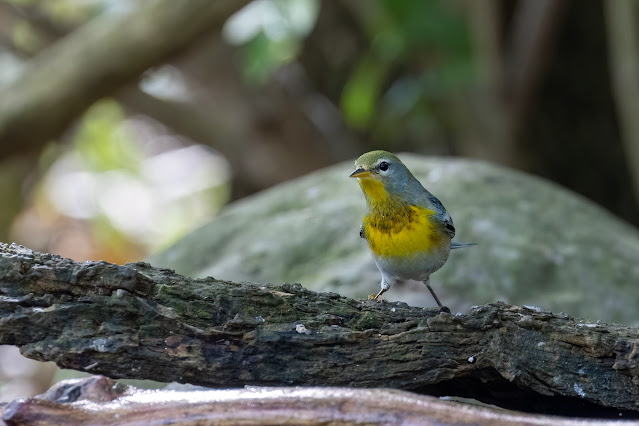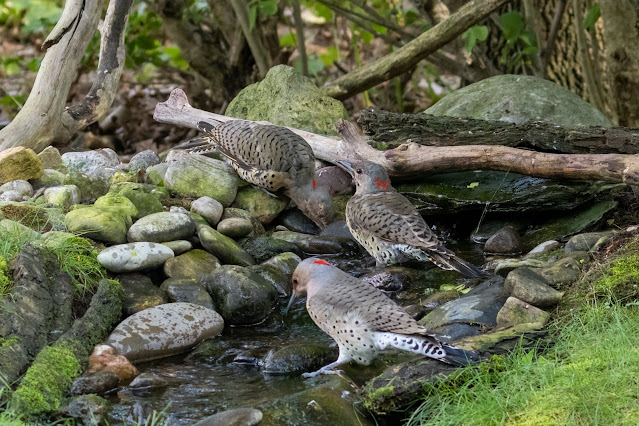Great Blue Heron.

Rondeau Provincial Park, Ontario, Canada. Sept 29, 2022. Out on the pontoon boat cruising the marsh edge, didn't see any soras or bitterns but had several great blues. Really like the eye focus abilities of Canons R7. Ardea herodias Great Blue Herons congregate at fish hatcheries, creating potential problems for the fish farmers. A study found that herons ate mostly diseased fish that would have died shortly anyway. Sick fish spent more time near the surface of the water where they were more vulnerable to the herons. source - allaboutbirds - org














